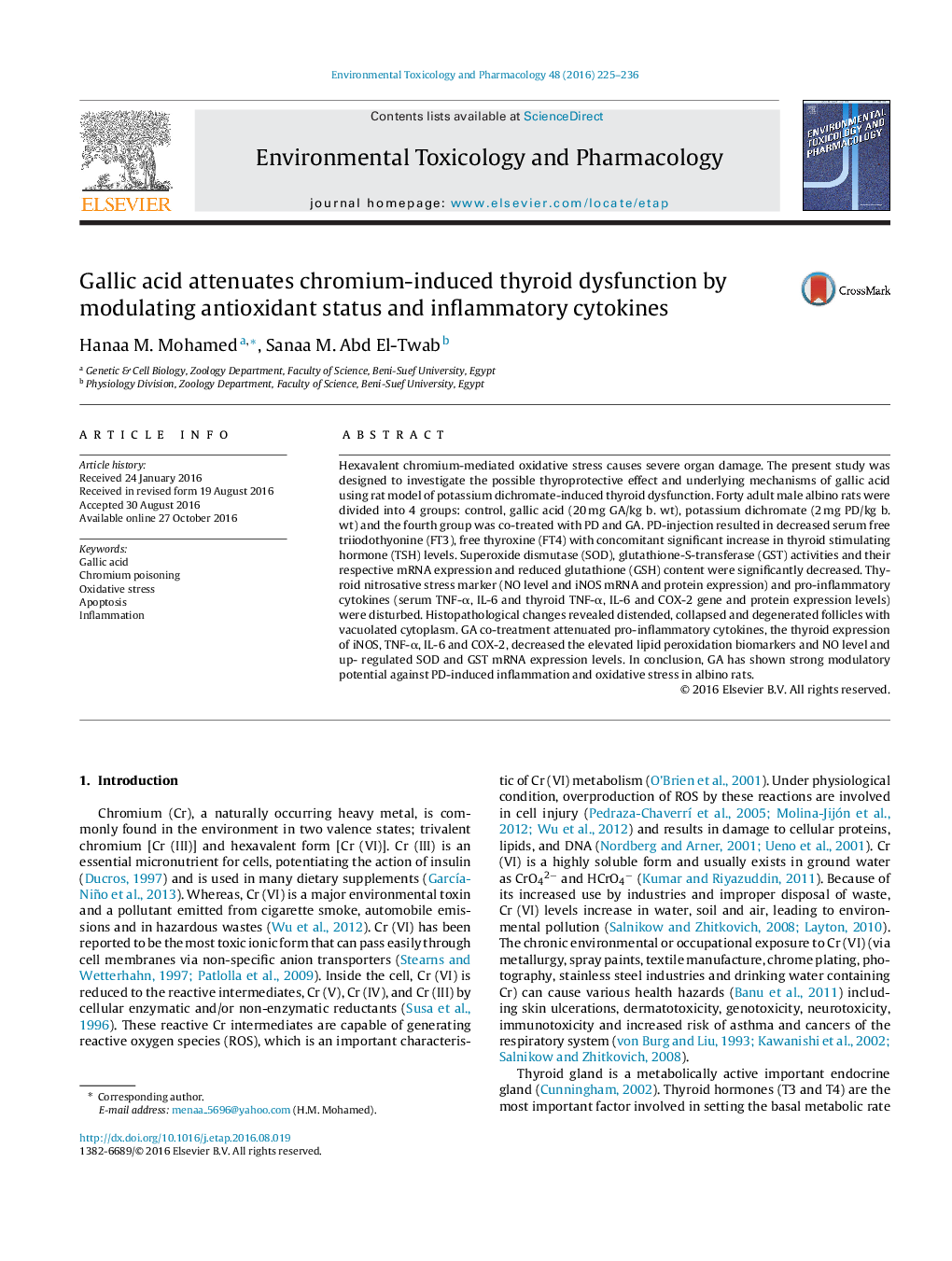| Article ID | Journal | Published Year | Pages | File Type |
|---|---|---|---|---|
| 5559913 | Environmental Toxicology and Pharmacology | 2016 | 12 Pages |
â¢We investigate the thyroprotective effect of gallic acid (GA) against potassium dichromate.â¢SOD, GST activities and their mRNA expression were significantly decreased.â¢GA attenuated the expression of iNOS, TNF-α, IL-6 and COX-2.â¢GA up-regulated SOD and GST gene expression levels.
Hexavalent chromium-mediated oxidative stress causes severe organ damage. The present study was designed to investigate the possible thyroprotective effect and underlying mechanisms of gallic acid using rat model of potassium dichromate-induced thyroid dysfunction. Forty adult male albino rats were divided into 4 groups: control, gallic acid (20 mg GA/kg b. wt), potassium dichromate (2 mg PD/kg b. wt) and the fourth group was co-treated with PD and GA. PD-injection resulted in decreased serum free triiodothyonine (FT3), free thyroxine (FT4) with concomitant significant increase in thyroid stimulating hormone (TSH) levels. Superoxide dismutase (SOD), glutathione-S-transferase (GST) activities and their respective mRNA expression and reduced glutathione (GSH) content were significantly decreased. Thyroid nitrosative stress marker (NO level and iNOS mRNA and protein expression) and pro-inflammatory cytokines (serum TNF-α, IL-6 and thyroid TNF-α, IL-6 and COX-2 gene and protein expression levels) were disturbed. Histopathological changes revealed distended, collapsed and degenerated follicles with vacuolated cytoplasm. GA co-treatment attenuated pro-inflammatory cytokines, the thyroid expression of iNOS, TNF-α, IL-6 and COX-2, decreased the elevated lipid peroxidation biomarkers and NO level and up- regulated SOD and GST mRNA expression levels. In conclusion, GA has shown strong modulatory potential against PD-induced inflammation and oxidative stress in albino rats.
